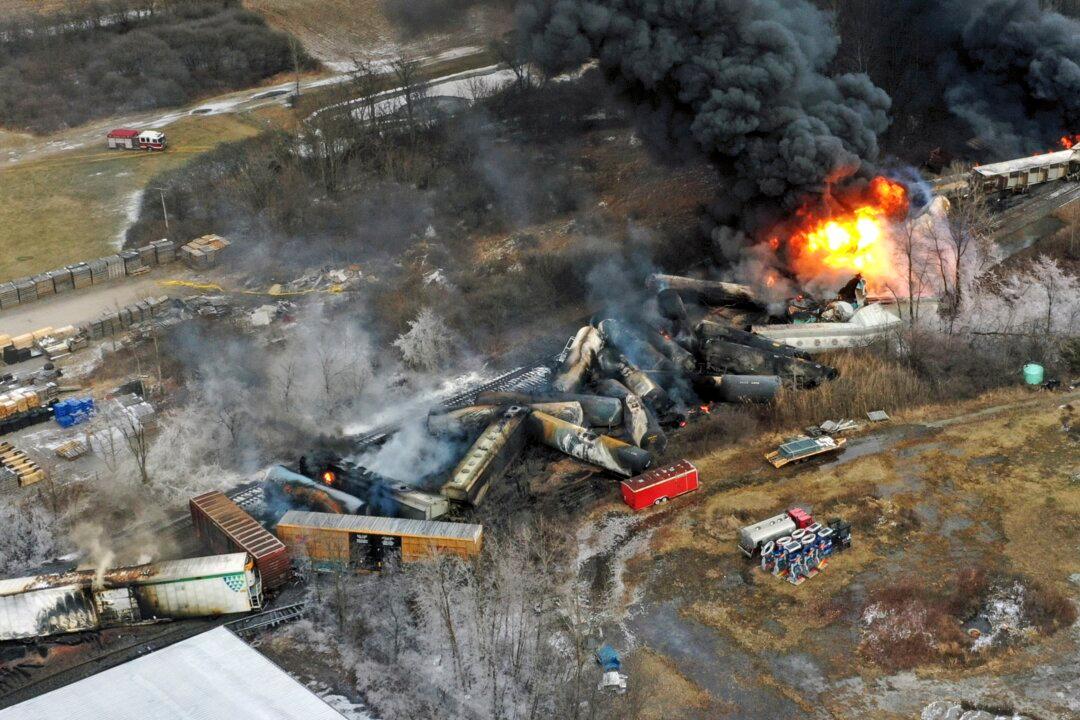Ohio has filed a 58-count civil lawsuit against Norfolk Southern Railway in federal court over the Feb. 3 toxic chemical derailment in East Palestine, state Attorney General Dave Yost said on March 14, citing his concern that the rail company’s accident rate has increased 80 percent over the past 10 years.
Norfolk Southern violated numerous state and federal laws, caused the release of “over 1 million gallons of hazardous chemicals” and created “hidden dangers” for the health of residents and Ohio’s natural resources, Yost said during an online news conference.





